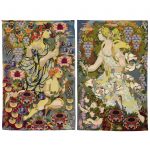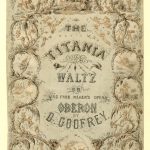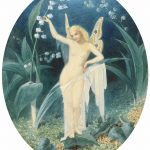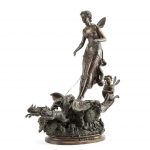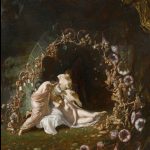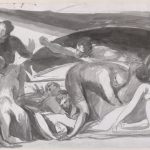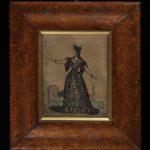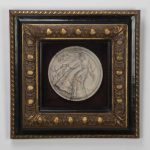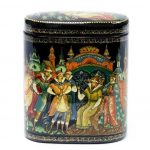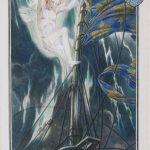Titania is the Fairy Queen and was created by William Shakespeare in his play A Midsummer Night’s Dream. Since Shakespeare’s creation, Titania has been used as a name for Fairy Queens in other fiction.
In traditional folklore, the fairy queen has no name. Shakespeare took the name “Titania” from Ovid’s Metamorphoses, where it is an appellation given to the daughters of Titans.
Shakespeare’s Titania is a very proud creature and as much of a force to contend with as her husband Oberon. She and Oberon are engaged in a marital quarrel over which of them should have the keeping of an Indian changeling boy. This quarrel is the engine that drives the mix ups and confusion of the other characters in the play. Due to an enchantment cast by Oberon’s servant Puck, Titania magically falls in love with a “rude mechanical” (a labourer), Nick Bottom the weaver, has been given the head of a donkey by Puck, who feels it is better suited to his character. It has been argued that this incident is an inversion of the Circe story. In this case the tables are turned on the character, and rather than the sorceress turning her lovers into animals, she is made to love a donkey after Bottom has been transformed. Reference: Wikipedia
Titania has often been depicted in works of art as well as fiction. Below are some examples of art works and items which portray Titania as the Fairy Queen.
Bjørn Wiinblad (1918-2006) Oberon and Titania for Loom-Art, circa 1972 wool tapestry, each signed Bjorn Wiinblad in script in the weave and bearing Loom-Art cloth tag with title and numbered 2 out of 18 or 6 out of 18 height 66in (163cm); width 45 3/4in (120cm) or height 68in (163cm); width 46 3/4in (120cm)
Sold for US$ 1,187 (£ 927) inc. premium at Bonhams in 2017
Music-cover sheet for ‘The Titania Waltz’ by Daniel Godfrey; decorative foliate border featuring fairies dancing in the air, and at top of sheet a scene from ‘Oberon’, with Titania leaning against a bank, conversing with an ass. Lithograph, printed in black, fawn and light blue Producer namePrint made by: Henry Calton Maguire (also designer) biography School/style British 1840-1854 (circa)
Reference: © The Trustees of the British Museum
John Simmons (1823-1876) Titania signed ‘J. Simmons’ (lower centre) pencil and watercolour heightened with touches of white and gum arabic on paper 9 ¾ x 8 in. (24.7 x 20.3 cm.), framed as an oval
Sold for GBP 8,125 at Christies in 2018
“Titania”, the fairy queen on a leaf chariot pulled by squirrels Patinated bronze Signed: E. Keyser, Rome; Nelli Roma foundry; titled: Titania 32″ H x 30″ W x 10.75″ D
Sold for $5,500 at John Moran Auctioneers, Inc. in 2018
Titania Sleeping Richard DADD (Chatham, 1817 – Chatham, 1886)
This painting depicts a scene from Shakespeare’s A Midsummer Night’s Dream (act 2, scene 2). Oberon, king of the fairies, is jealous of his wife Titania. He wants to see her suffer and so squeezes the juice of a magical plant over her eyelids while she sleeps so that she falls in love with the first creature she sees when she awakes-the stupid, oafish weaver Bottom, who has magically been given the head of an ass. At the end of the play, the spells are lifted and everyone is as they were before.
Reference:The Louvre
John Howard Visiting a Lazaretto (recto); Titania and Her Fairies (verso) Artist:George Romney (British, Beckside, Lancashire 1734–1802 Kendal, Cumbria) Subject:John Howard (British, 1726–1790) Date:ca. 1790–92 Medium:Pen and black ink, brush and gray wash, over graphite on laid paper
Reference: The Metropolitan Museum of Art
Tinsel print depicting Madame Vestris in the character Titania, Queen of the Fairies, from the production A Midsummer’s Night Dream, no date
Reference: © Victoria and Albert Museum
Framed cultured stone roundel after E.W. Wyon, (English 1811-1885), second quarter 20th century, depicting Oberon and Titania from Shakespeare’s ‘A Midsummer Night’s Dream,’ having a faint inscription at the rim reading ‘E.W. Wyon Dest. & Sculpt 1st Jan, 1848,’ roundel 7.25″dia, overall with shadowbox frame, 17.25″h x 17″w x 3.5″d.
Sold for $350 at Great Gatsby’s Auction Gallery, Inc. in 2017

